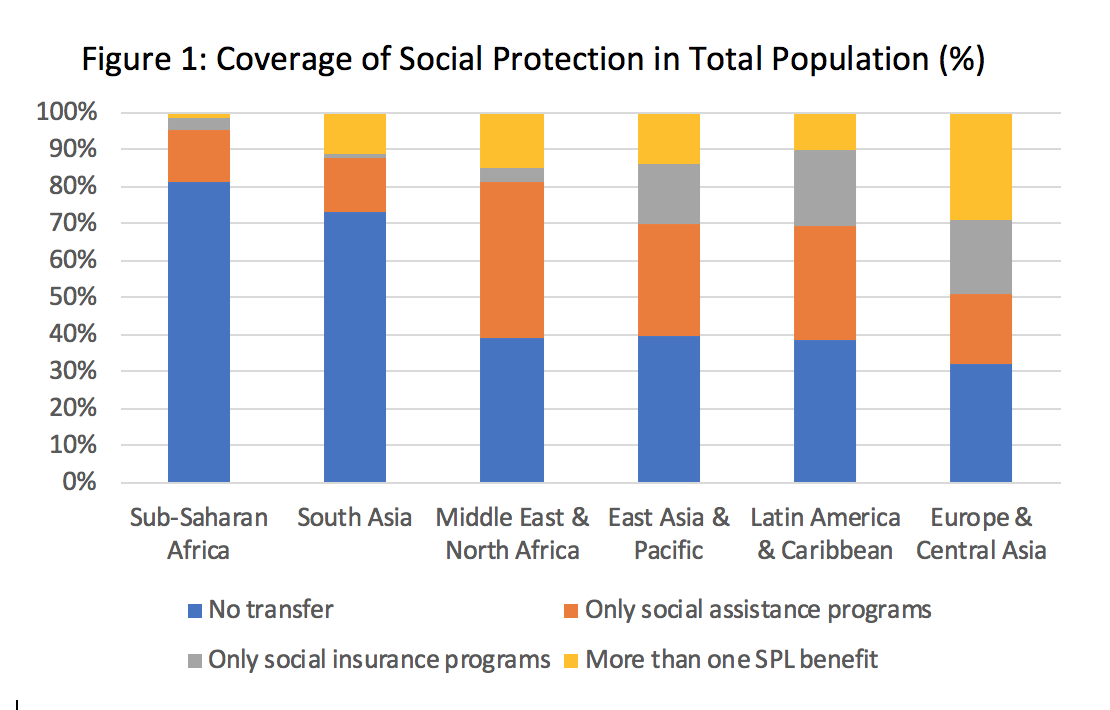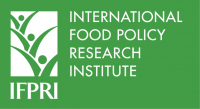
By Fleur Wouterse
This post originally appeared on the IFPRI.org blog as the first of a series of blog posts on the release of the 2017-18 Annual Trends and Outlook Reports (ATORs) at the 2018 ReSAKKS Annual Conference in Addis Ababa Oct. 24-26. This year's ATOR theme is social protection. Read the others here , here and here .
Within more empowered segments of the poor population in African societies, demand for social protection programs is on the rise due to the historically elevated poverty levels, faster economic growth, rapid urbanization and increasingly open, pluralistic political systems. As most Africans still make their living from the land, they are particularly vulnerable to weather, natural disasters, and climate shocks and food insecurity are daily realities. Yet, in contrast to other regions, coverage of social protection is extremely low in African countries (Figure 1).
 ReSAKSS (Source: ASPIRE/World Bank)
ReSAKSS (Source: ASPIRE/World Bank)
These countries can and must make substantial progress in developing functional social protection schemes in the coming decade; the stability and growth of their economies depend directly upon it. Resources needed to meet future demand for social protection will be substantial and are bound to compete with investments required to accelerate and broaden the current economic recovery process. But countries that fail to address the demand are likely to face social and political unrest.
Social protection can contribute to agricultural (and economic) growth
There are three principal objectives here—the three P's of social protection. The first is protecting households against hunger through consumption smoothing. The second, prevention, is intended to protect a household’s assets during crises. The third P is livelihood promotion. When recipient households, especially those living in remote rural areas of developing countries, face significant barriers in multiple markets, social protection can affect agricultural production and productivity through three channels in the short to medium run. First, social protection interventions—such as unconditional cash transfers—reduce liquidity constraints and may encourage spending on agricultural inputs. If regular and predictable, they can also facilitate small-scale savings or investment, by acting as collateral, thus enabling access to credit. Second, social protection instruments can affect risk attitudes of farm household members by altering household wealth. Third, social protection instruments may have a positive effect on food and nutrition security, which may in turn enhance labor productivity.
This means that resources spent on, for example, cash transfers may generate broader benefits to the agricultural economy—and the tradeoff between rural poverty reduction and raising agricultural productivity may not be as stark as commonly thought. More information is needed to identify and prioritize the types of social expenditures that have the highest impact on productivity among the poor and vulnerable.
Policy synergies are needed for sustainable graduation
Agricultural and social protection policies originate from different disciplines and are still viewed by many as working on parallel tracks: Implemented by different authorities, targeting different populations, and often competing for financial resources. Yet each intimately impacts the other: Both play a role in poverty reduction strategies and coordinating social protection with agriculture could trigger broad based rural development.
One example are Cash+ programs in rural areas. These provide regular transfers in combination with additional components, such as productive assistance and training. The aim is to reach beyond income effects, inducing further behavioral changes or addressing supply-side constraints.
While available evidence shows that cash transfer beneficiaries invest in economic and productive activities, which contribute to livelihood improvements, often households need such additional support to transition to a higher-income livelihood and graduate from social protection. The "plus" components of Cash+ strengthen the economic and productive impacts of the cash component. In rural areas the "plus" component often focuses on agricultural productivity. This approach—integrating measures for increased agricultural productivity with those for social protection—demands coherence between agricultural and social protection policies and budgets.
Economic growth has created some fiscal space in Africa over the last decade, but competition is keen for budget resources. By addressing constraints on household decision-making, social protection programs can enhance agricultural production and productivity. Emphasizing the livelihood promotion role of social protection is key for building coalitions between ministries charged with social protection and of agriculture in support of social protection funding.
Fleur Wouterse is a Senior Research Fellow with IFPRI’s West and Central Africa Office in Dakar.

